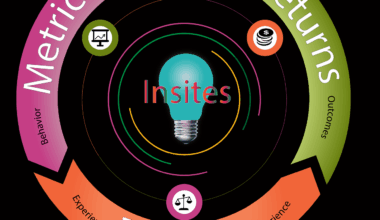Measuring Organic Social Media Success: Key Metrics to Track
Organic social media growth is a crucial aspect of any successful social media marketing strategy. To measure this growth, you need to identify key metrics that give you insights into how well your content is performing. One primary metric to consider is engagement, which includes likes, comments, shares, and overall interaction with your posts. The more engaged your audience is, the more likely they are to spread the word about your brand. Another essential metric is reach, which refers to how many unique users see your posts. A higher reach indicates your content is not only being seen but is also resonating with your target audience. Additionally, consider tracking follower growth over time. This metric allows you to gauge if your organic strategies are effective in attracting new audience members. Along with these metrics, analyze referral traffic from social media to your website, as this plays a vital role in understanding the return on investment for your efforts. Combining these metrics can provide a well-rounded understanding of your organic social media success.
In addition to engagement, reach, and follower growth, another critical metric to track is conversion rates from social media. This involves assessing how many of your followers or visitors complete desired actions, such as signing up for a newsletter or making a purchase. Keeping tabs on clicks increase your understanding of what content drives visitors to take these actions. You can also monitor social media sentiment, which includes both positive and negative comments regarding your content. This metric helps you gauge audience perception and adjust strategies accordingly. Tools exist to aid in sentiment analysis, ensuring you have the right data to base decisions on. Consistency of posting is another metric that shouldn’t be overlooked. Regular posting can lead to higher engagement and visibility, establishing a reliable presence in users’ feeds. Tracking the performance of different post types, whether images, videos, or links, can also help determine which formats your audience responds to best. Ultimately, having a blend of quantitative and qualitative data will paint a comprehensive picture of your organic growth on social media.
Moreover, understanding the demographics of your audience is vital in measuring organic social success. Analyzing the data allows you to tailor your content to better suit the preferences and interests of your target demographic. For instance, insights such as age, location, and gender can help refine your messaging and enhance engagement. Use tools like Facebook Insights or Instagram Analytics to gather this necessary demographic information about your audience. Another important aspect to monitor is your post timing. The day and time when you publish content can significantly affect its performance, as it may determine how many people see it. Experiment with different posting times to identify when your audience is most active, enabling you to optimize your strategy for maximum reach and engagement. Additionally, employ A/B testing for posts to determine how variations in content impact engagement rates. This methodical testing process can unveil the most effective approaches for organic growth. As you gather this wealth of information, continuous improvement should be your focus.
Optimizing Your Strategy Based on Metrics
In a continually changing social media landscape, optimization is essential. Regularly revisiting your metrics will help you reassess and tweak your strategy based on what the data reveals. It’s crucial to set specific goals for each metric, empowering you to have a direction for your social media efforts. Instead of just focusing on vanity metrics like likes or followers, prioritize those that contribute to your business goals. Setting clear KPIs can also help in measuring overall success in real-time. Remember that organic social media growth doesn’t happen overnight; it requires time, strategy, and patience. Instead of getting discouraged by slow growth, use analytical tools to identify trends and areas where you can improve. Make informed adjustments—this could mean changing your content types, posting frequency, or audience engagement methods. Establishing benchmarks can also be beneficial. By comparing your metrics to industry standards, you can gain insights into how well you stack up against competitors. This process informs decision-making that drives organic growth.
Furthermore, keep an eye on your competitors’ organic presence. Analyzing the effectiveness of their strategies can reveal opportunities that you might be missing. Investigate their engagement rates, the types of content they post, and how frequently they update their social media channels. This competitive analysis can guide you in tailoring your own tactics for better results. Note any successful campaigns they run, understanding audience reactions to their moves. Not only do you gain insights from their successes, but you can also identify areas where they may be falling short. Knowing what works for others in your niche can provide you with a roadmap to improve. Additionally, always remember the importance of storytelling in social media content. Authentic storytelling can inherently boost engagement and build customer loyalty. Prioritize creating narratives around your brand, products, or services that your audience can resonate with. Drawing your audience into your story can significantly enhance organic growth and create lasting connections with your audience.
Utilizing Tools for Measurement
The implementation of the right measurement tools can streamline the process of tracking these metrics. Platforms like Google Analytics provide extensive reporting features that help you understand traffic coming from social media postings. Moreover, third-party tools such as Hootsuite, Buffer, or Sprout Social offer advanced analytics specifically designed for social engagement. These tools consolidate your data, making it simpler to analyze engagement rates, click-through rates, and conversion rates across various platforms. Setting up reporting at regular intervals allows for timely adjustments based on the insights gathered. While automated tools are useful, ensure to periodically assess the insights manually to capture a complete picture. Importantly, remember that not every metric will be relevant for every brand, and finding the right set is key. Customize your efforts based on what aligns with your unique objectives and target audience. By continuing to gather data and adjust your strategy, you will be better positioned to achieve sustainable organic growth on social media platforms.
In conclusion, measuring organic social media success requires careful tracking of several interconnected metrics. By focusing on engagement, reach, follower growth, and conversion rates, you can develop a well-informed strategy. Comprehensively analyzing these metrics empowers you to understand what is effective while keeping pace with shifts in audience behavior. Establishing a routine for data review helps you remain agile in your approach. Remember to also keep an eye on your competitors and the ever-evolving landscape of social media. All these collected insights, when used effectively, foster a more significant impact on your overall marketing strategy. Continuously adapting based on feedback will result in organic growth that feels authentic and engaging. Investing time in understanding what the metrics reveal ensures that your social media presence becomes more than just a numbers game; it becomes a genuine, interactive platform for building relationships and driving brand loyalty. Keep refining your strategies based on what resonates best with your audience, and stay committed to measuring success through a comprehensive approach.


